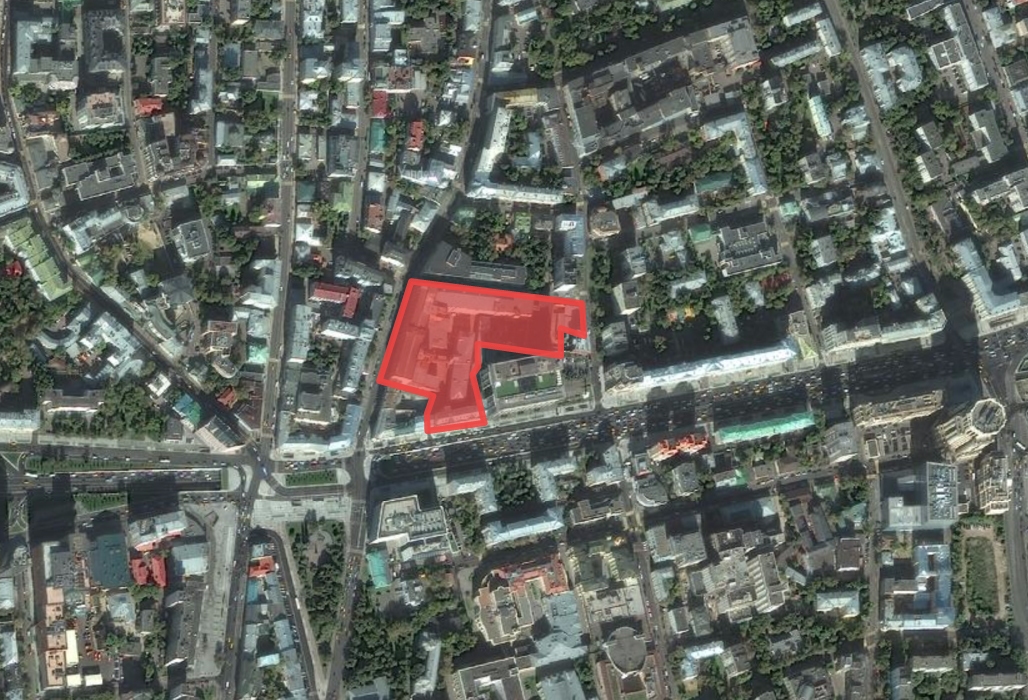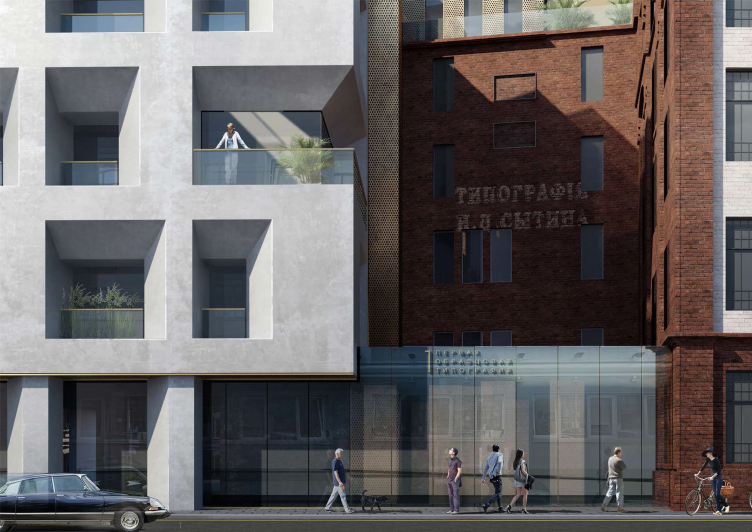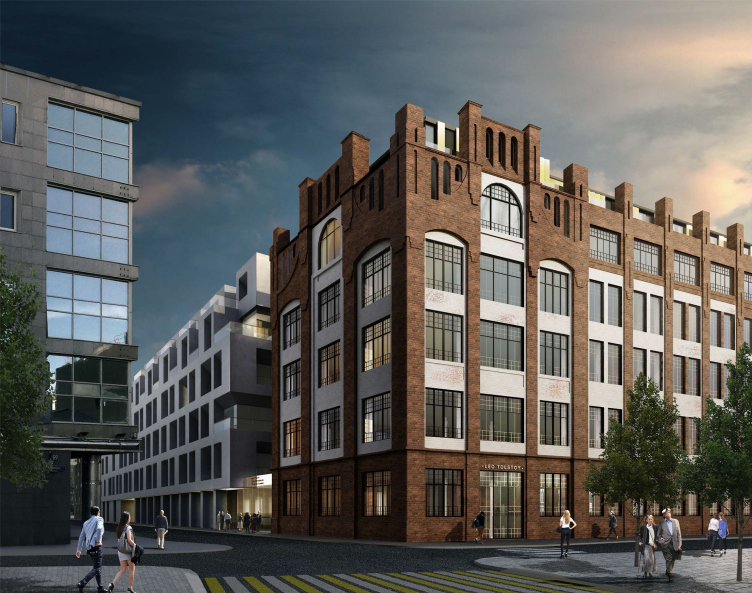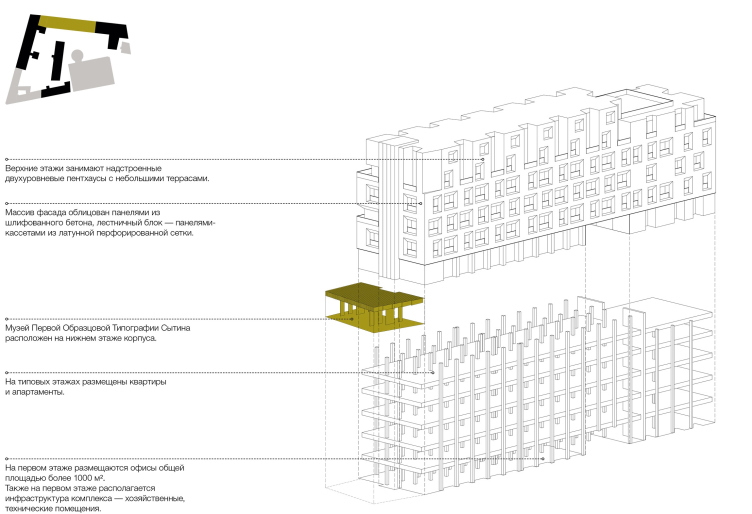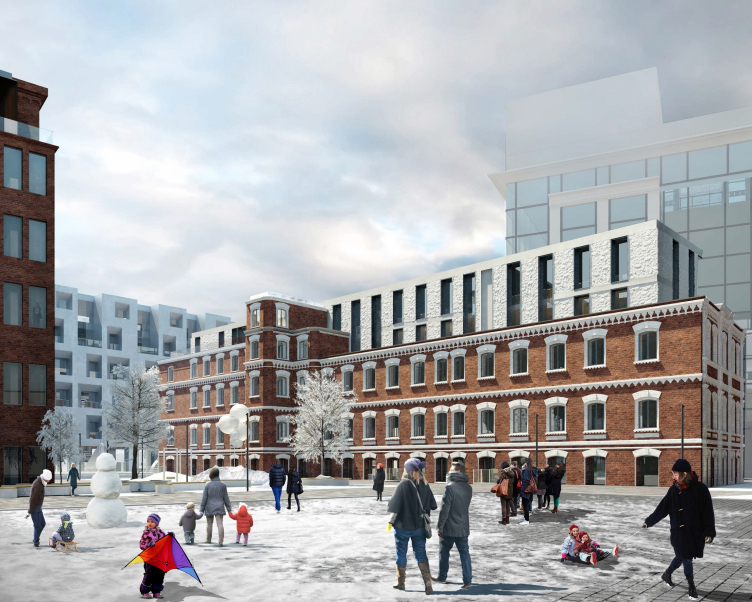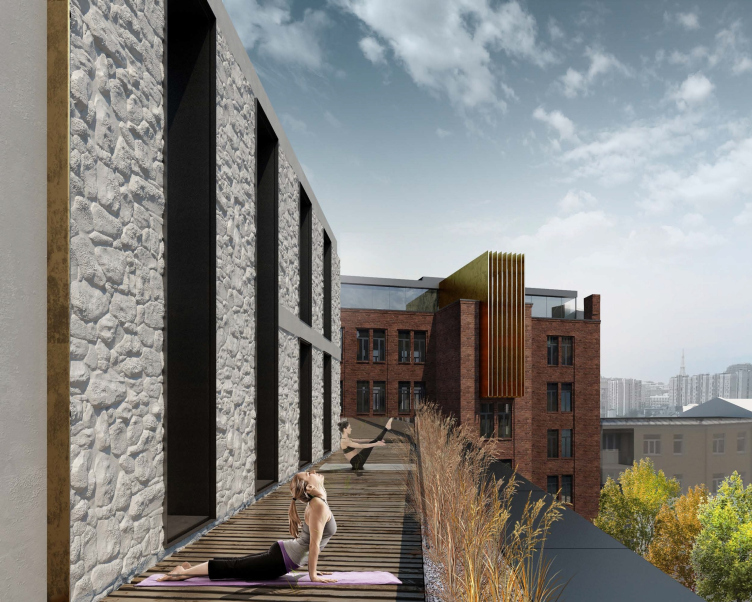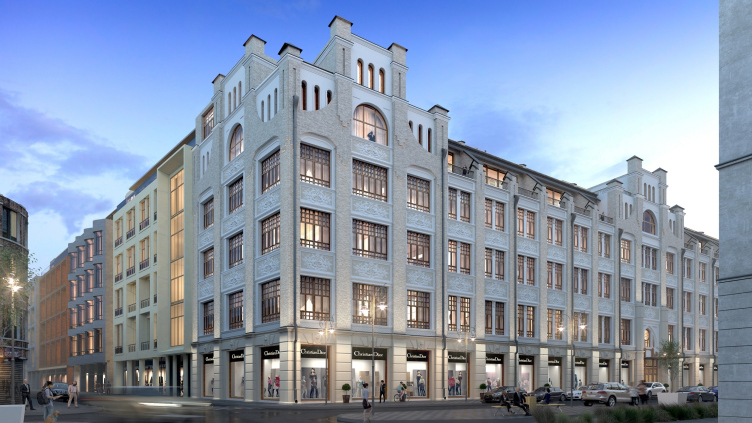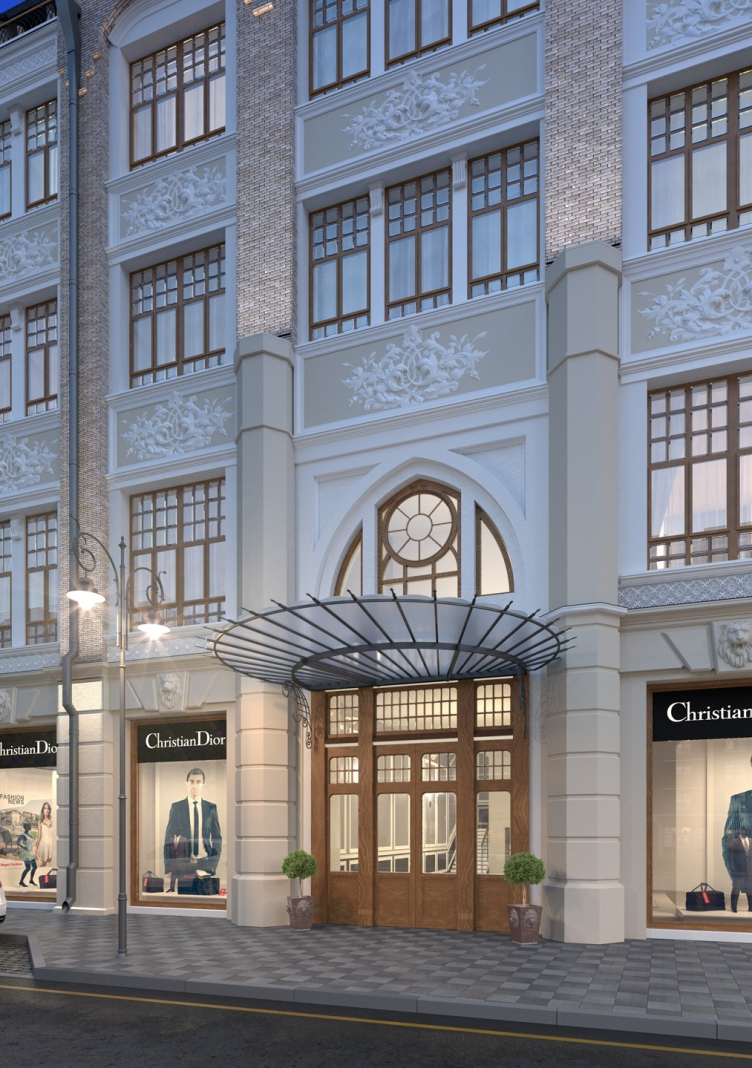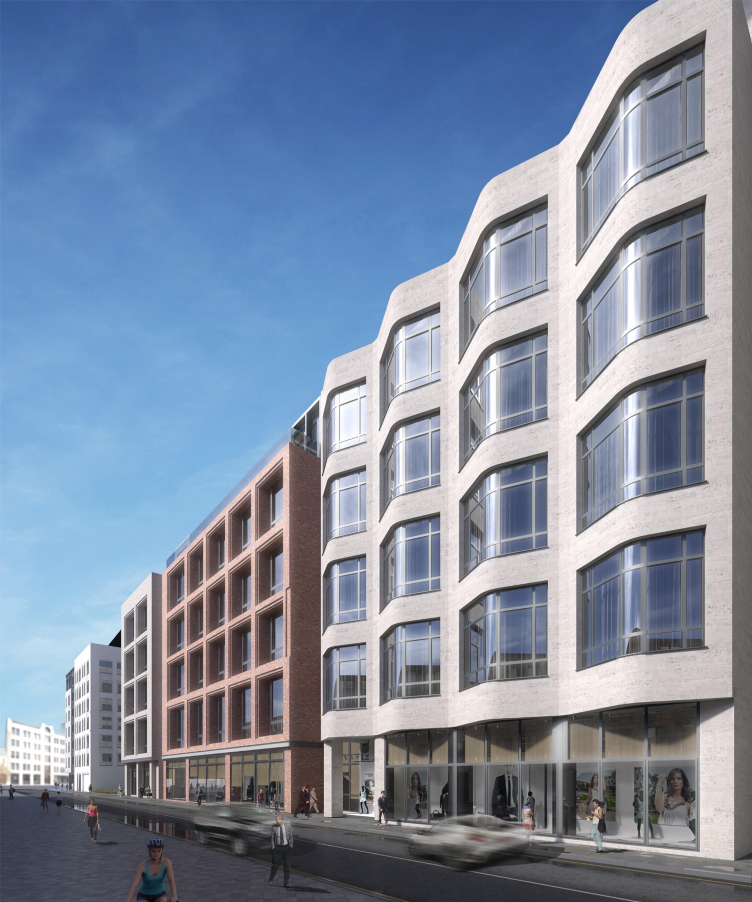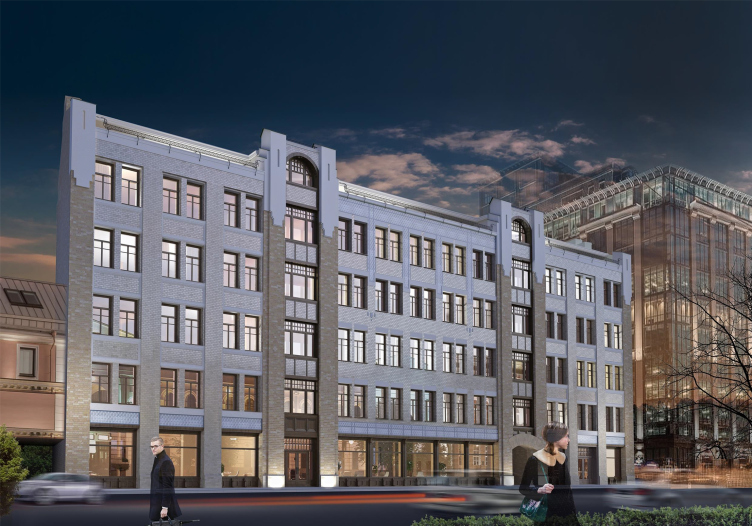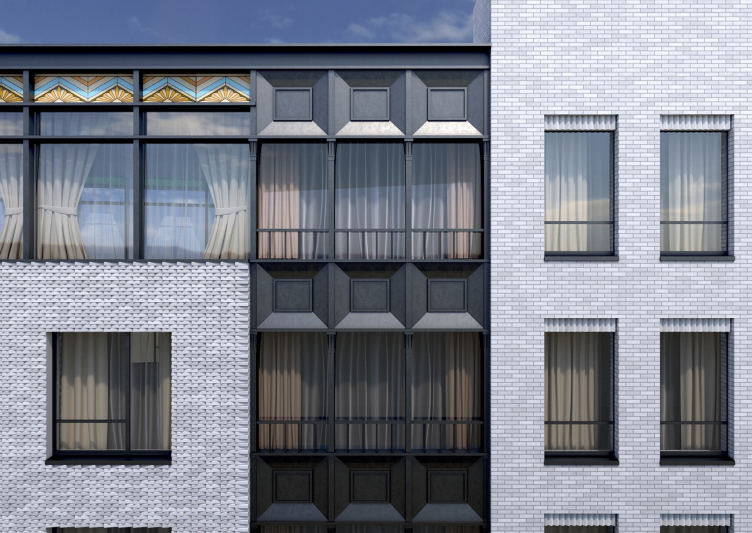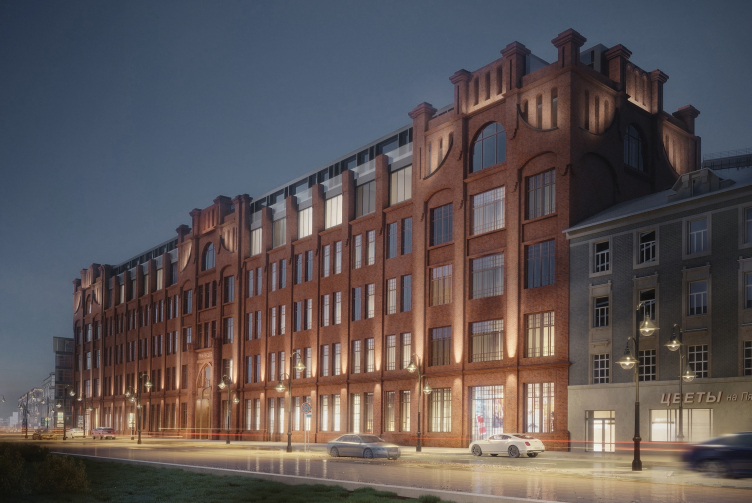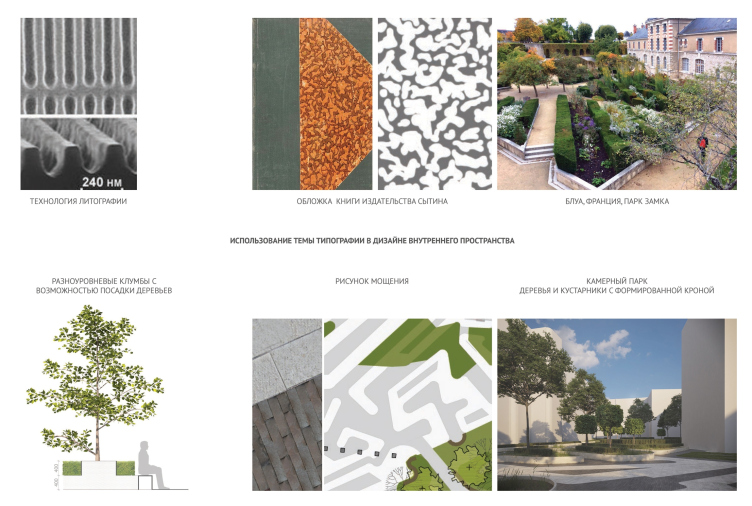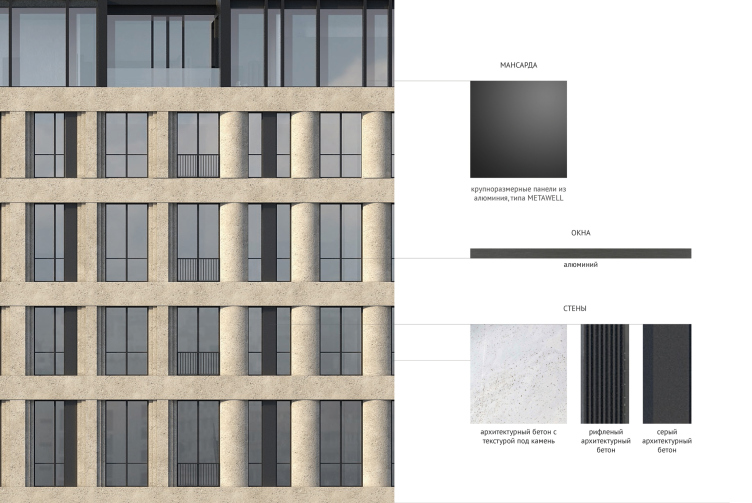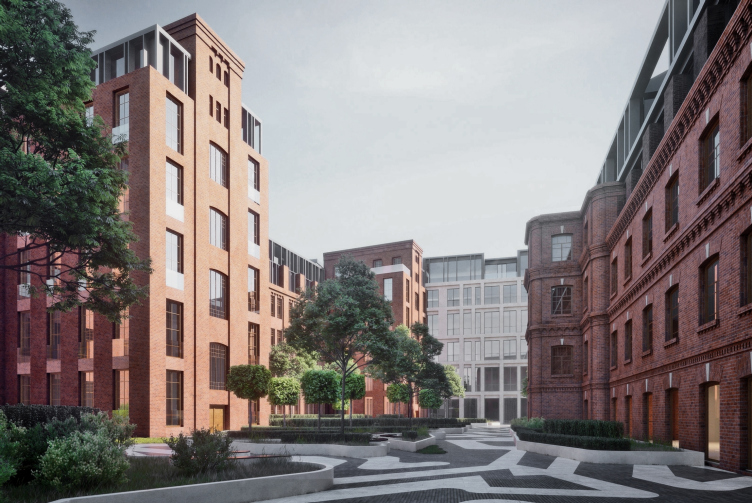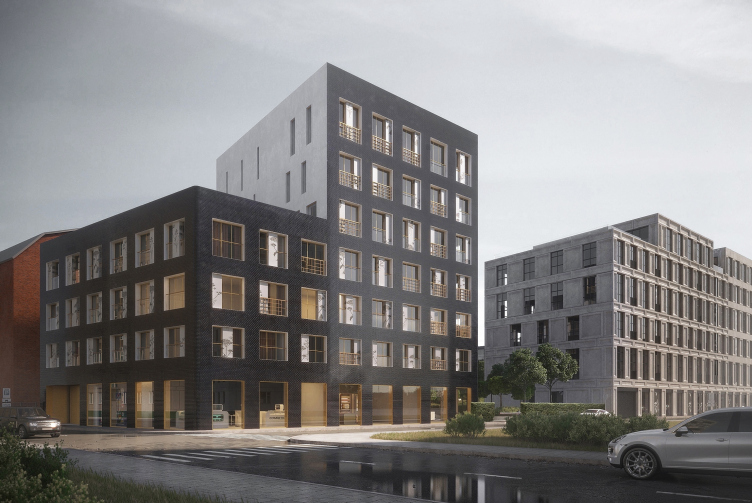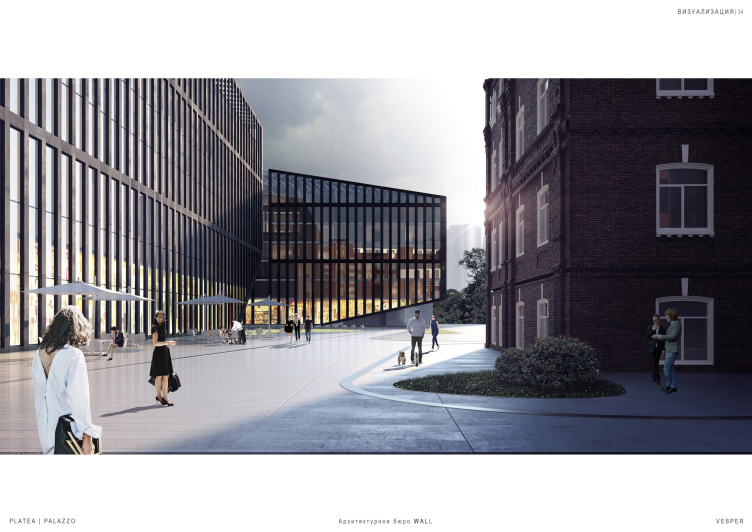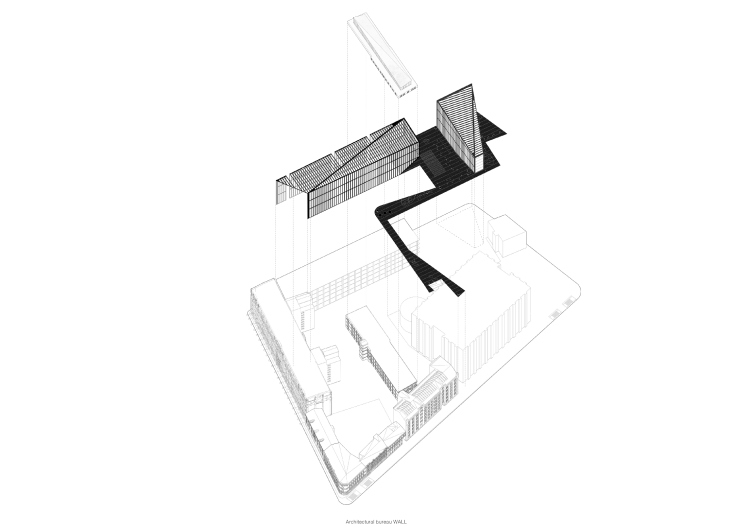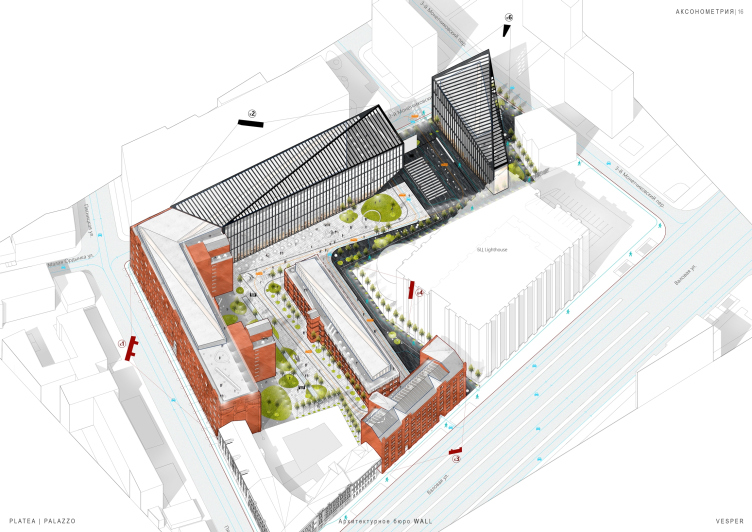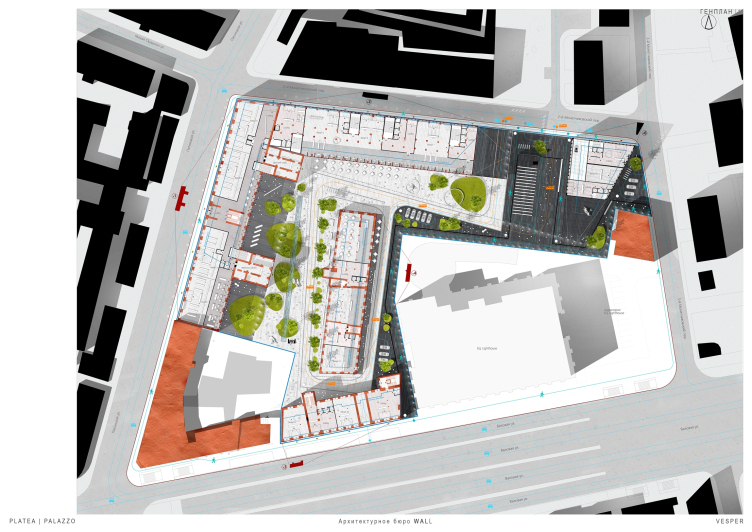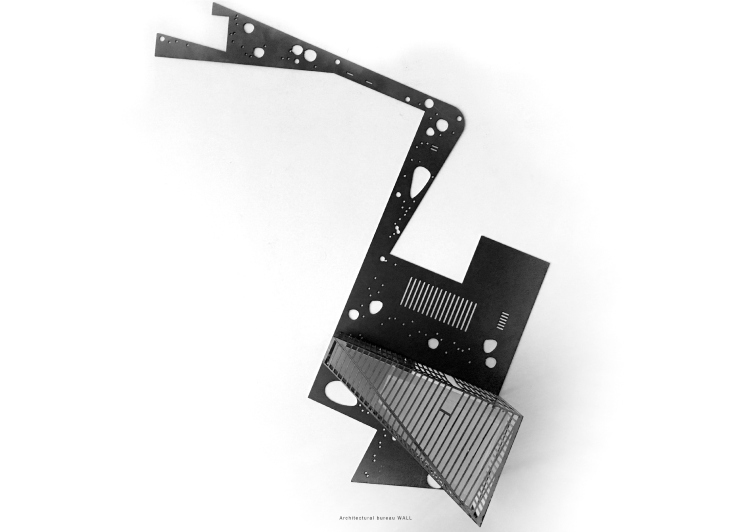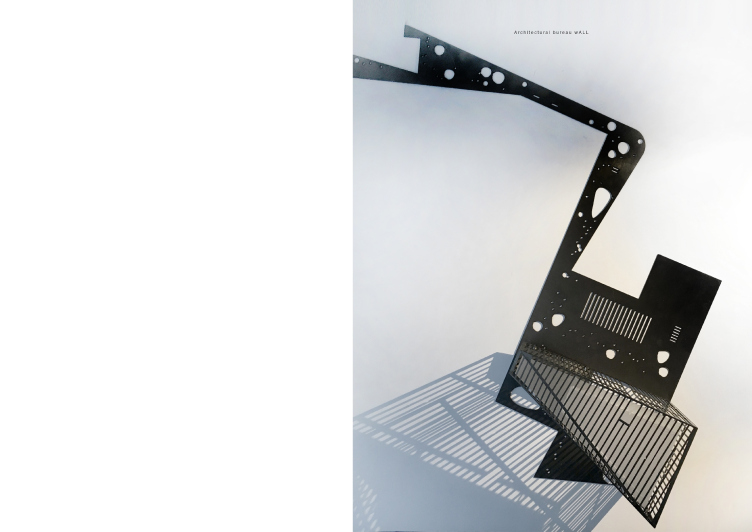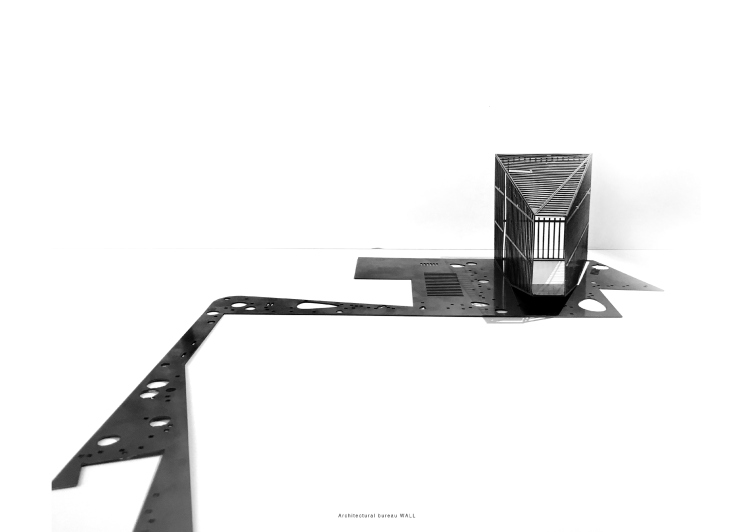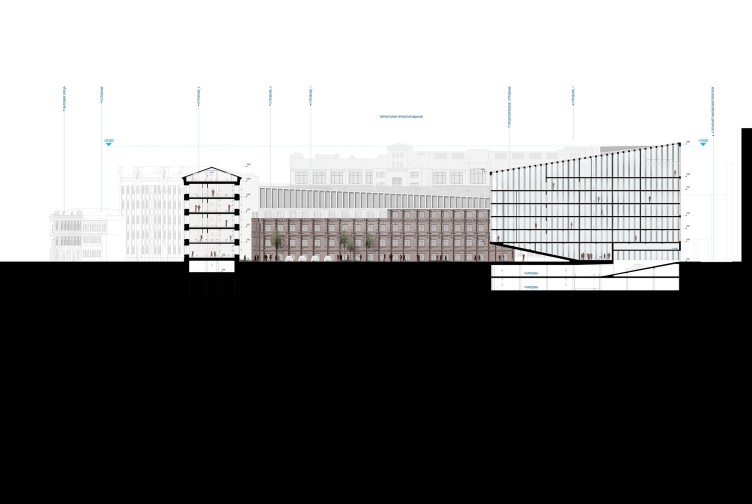Four Moscow-based architectural firms took part in the competition: Kleinewelt, ABV, DNK, and Wall. The competition was won by Kleinewelt Architekten. Then the construction was canceled.
Kleinewelt
Competition project for renovating the Sytin Printworks into a premium-class apartment and housing complex. Sytin Printworks Museum © Kleinewelt Architekten
The concept of this literature-oriented project is built upon the combination of different imagery systems based on the creative works of five Russia’s greatest men of letters – Tolstoy, Gogol, Esenin, Mayakovsky, and Blok – within the framework of a single city block. According to the authors’ idea, such saturated cultural content must take the complex to a whole new level, as far as its premium quality is concerned, which proceeds from the interpretation of material and emotional comfort, and the possibility for each of the potential clients to choose the kind of atmosphere that appeals personally to him. Based on serious scientific research, the restoration of the historical façades is tactfully augmented by laconic buildups of penthouses; the authors design the plastique of the new buildings in broad strokes, putting together large cubes with sunken-in recessions, or hefty stone slabs that symbolize the new epoch and new artistic statement. As for the center of public life of this city block, it must become the yard space devoted to Diaghilev Russian Seasons.
More on the project by Kleinewelt Architekten
Competition project for renovating the Sytin Printworks into a premium-class apartment and housing complex. Layout. Tolstoy building © Kleinewelt Architekten
Competition project for renovating the Sytin Printworks into a premium-class apartment and housing complex. Layout. Mayakovski building © Kleinewelt Architekten
Competition project for renovating the Sytin Printworks into a premium-class apartment and housing complex. Gogol against the background of Tolstoy © Kleinewelt Architekten
Competition project for renovating the Sytin Printworks into a premium-class apartment and housing complex. Layout. Gogol building © Kleinewelt Architekten
Competition project for renovating the Sytin Printworks into a premium-class apartment and housing complex. Gogol building. Penthouse © Kleinewelt Architekten
***
ABV
Contest project of renovating the First Exemplary Printing Works. Building 1 © ABV Group
Together with restoring the appearance of the historical buildings, the authors of the project laid stress on developing a diverse range of apartments. As for the difficult charade formed by the Shukhov columns, Erichson windows, vaulted ceilings, and modern requirements for residential property, the architects were only able to solve it by stepping away from the technical specifications. The architects brought the silhouette of the main building back to its original outline by shifting the mansard inwards; the façade was designed in gray and beige tones with intricate sculptured decor. The extended façade of the building standing on the 2nd Monetchikovsky Alley was divided into four parts that can be visually perceived as independent buildings; the new building on the corner of the block, quite new in its architecture, is decorated with colorful Art Nouveau ornaments which refer us to the epoch when the historic buildings of the complex were built.
More on the project by ABV
Contest project of renovating the First Exemplary Printing Works. Building 1 © ABV Group
Contest project of renovating the First Exemplary Printing Works. Building 2 © ABV Group
Contest project of renovating the First Exemplary Printing Works. Building 3 © ABV Group
Contest project of renovating the First Exemplary Printing Works. Building 4 © ABV Group
Contest project of renovating the First Exemplary Printing Works. Building 6 © ABV Group
Contest project of renovating the First Exemplary Printing Works. Building 6. Facade fragment © ABV Group
***
DNK ag
Contest project of renovating the First Exemplary Printing Works. View from the Pyatnitskaya Street © DNK ag
The imagery of the project is based on the theme of a printing house in its most direct meaning – a place where books are printed. The relief as the basis of book printing, the structure of a letter case, fragments of engraved plates and ornaments – all these attributes of book-printing business turned into architectural and decorative techniques that unite the historical and newly-built buildings of the complex into a single whole. The building which stands on the 2nd Monetchikovsky Alley embodies the link of time: the framework that the authors keep intact looks as though it “breaks through” the new façade that has been dressed upon it. In order to make sure that the building is not perceived as a monotonous one, the architects proposed three different versions of arranging the coffers on the façade, while on the mansard level the building’s silhouette is broken into three parts by the cutaways of the terraces. As for the building that stands inside the yard, the authors propose to build it up with a mansard of ostentatiously modern shape with a jagged line of the façade, which would thematically connect this city block to the neighboring buildings, while the yard landscaping is graced with elements of castle architecture.
More on the project by DNK ag
Contest project of renovating the First Exemplary Printing Works. The concept © DNK ag
Contest project of renovating the First Exemplary Printing Works. Concept of landscaping the yards © DNK ag
Contest project of renovating the First Exemplary Printing Works. Main entrance from the Pyatnitskaya Street © DNK ag
Contest project of renovating the First Exemplary Printing Works. Fragment of the facade of Building 2 standing along the 3rd Monetchikovsky Alley. Version 1 © DNK ag
Contest project of renovating the First Exemplary Printing Works. View of the old yard © DNK ag
Contest project of renovating the First Exemplary Printing Works. New building on the 3rd Monetchikovsky Alley © DNK ag
***
Wall
Contest concept of renovating the First Exemplary Printing Works. © Wall
The authors of the project propose to use such a new by Moscow standards technique as “semi-private space”. Leaving part of the yard in full power of the residents of the complex, they turn the rest of the territory into the so-called “black path”, marked by contrastive paving. Starting from the Garden Ring, it leads to a newly-built sculpture of a building that the architects treat as the cornerstone of this city block defining its identity. This is a trapeze-plan glass volume with a slanting roof, dissected into slender verticals by black pylons. The same kind of plastique is applied to the façades of the renovated “soviet” building on the 2nd Monetchikovsky Alley. As far as the historical buildings are concerned, the architects are planning to restrict themselves to maximum preservation and restoration of the aesthetics of the existing construction.
Contest concept of renovating the First Exemplary Printing Works. © Wall
Contest concept of renovating the First Exemplary Printing Works. © Wall
Contest concept of renovating the First Exemplary Printing Works. © Wall
Contest concept of renovating the First Exemplary Printing Works. © Wall
Contest concept of renovating the First Exemplary Printing Works. © Wall
Contest concept of renovating the First Exemplary Printing Works. © Wall
Contest concept of renovating the First Exemplary Printing Works. © Wall
***
